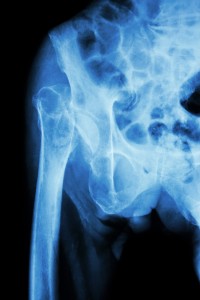 Dashboard Injury type motor vehicle accidents is the primary mechanism of hip dislocations across the world. Studies indicate that reduction of a posterior dislocation without an acetabulum fracture must be ‘reduced’ within six hours of the injury for best long-term functional results and to decrease the risk of avascular necrosis (AVN). It was once believed that simple dislocations had excellent long-term results, however, recent studies indicate that this is not the case and life care planners must account for known complications and this injury requires long-term physician follow up, diagnostic tests, and medical care.
Dashboard Injury type motor vehicle accidents is the primary mechanism of hip dislocations across the world. Studies indicate that reduction of a posterior dislocation without an acetabulum fracture must be ‘reduced’ within six hours of the injury for best long-term functional results and to decrease the risk of avascular necrosis (AVN). It was once believed that simple dislocations had excellent long-term results, however, recent studies indicate that this is not the case and life care planners must account for known complications and this injury requires long-term physician follow up, diagnostic tests, and medical care.
In patients who present to an emergency room with a hip dislocation without an acetabulum fracture, a priority in management must be to have this dislocation ‘reduced’ within six hours of injury to decrease the risk of AVN. CT scans are necessary prior to and after reduction to evaluate for associated injuries to the structures of the joint. In approximately 2 to 15% of dislocated hips ‘close reduction’ (or popping the hip into place) with external force in the emergency room is not possible and this situation represents a surgical emergency and ‘open reduction’ is necessary.
In patients whom ‘closed reductions’ are not possible it is necessary to intraoperative examine the hip joint prior to ‘open reduction’ to examine and remove loose bony fragments and other soft tissue debris within the joint that may have prevented ‘closed reduction’. Following both ‘closed reduction’ and ‘open reduction’ the stability of the affected hip joint must be tested to ensure these is no excess laxity that may lead to osteoarthritis or recurrent dislocation.
Dislocations with fractures of the femoral head and acetabulum tend to have worse functional prognosis overtime as well as those hips that required ‘open reduction’. AVN of the femoral head occurs in 5% of those isolated hip dislocations that are reduced within 6 hours and up to 50% of those reduced after 6 hours. Post-traumatic osteoarthritis is common between 25-40% and likely the result of cartilaginous injury that occurred at the time of injury.
Sciatic nerve injury occurs commonly in hip dislocations since this nerve runs just behind the hip joint and in 15-20% cases there are neurological signs of injury. The sciatic nerve has two components the tibial and peroneal nerves. The peroneal nerve is more prone to stretch injures and compression injures from hematomas than the tibial nerve. Symptoms of peroneal nerve injuries are numbness between the first and second toe and the outside of the foot and motor weakness with lifting the toes and foot. If there is no improvement in nerve function after 3-4 weeks the patient may need surgical evaluation with a peripheral nerve surgeon. Long-term orthotic management may be needed with an ankle-foot orthotic.
Case managers must understand that these are high force motor vehicle accidents and therefore are often associated with multiple injuries. Studies indicate that up to 90% have brain injuries, 50% have upper extremity fractures, 25% have abdominal injuries, and 50% have thoracic injuries. Case managers must not overlooked this issue and patients must be referred to an acute rehabilitation hospital where they receive supervised therapy related to the hip to avoid excessive flexion or extension of the hip, limited weight-bearing with gait, and general strengthening.
Life Care Planners need to recognize that isolated hip dislocations must be accounted for in the future care plan to the patient’s life expectancy because there are significant complications including osteoarthritis with or without AVN that require ongoing diagnostic test, medication management, physical therapy, and total hip replacements.
http://www.hjdbulletin.org/files/archive/pdfs/281.pdf
http://www.bjj.boneandjoint.org.uk/content/76-B/1/6.short
http://www.bjj.boneandjoint.org.uk/content/63-B/4/548.short
Press Contact
Dr. Greg Vigna, MD, JD
T: 800-761-9206
https://www.lifecare123.com
Connect with Dr. Greg Vigna, MD, JD
on Facebook, Twitter, or Google+
#DrGregVigna

